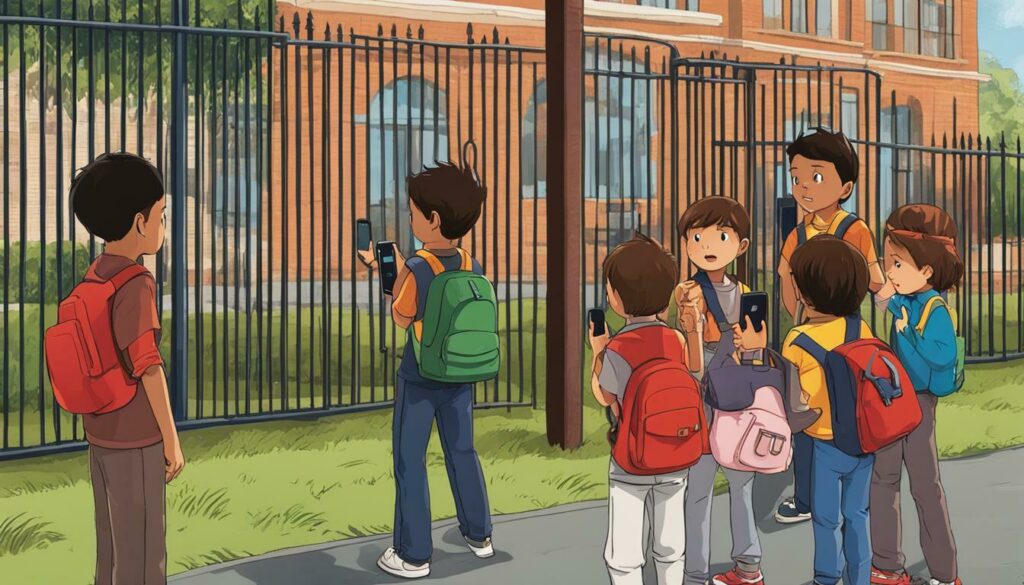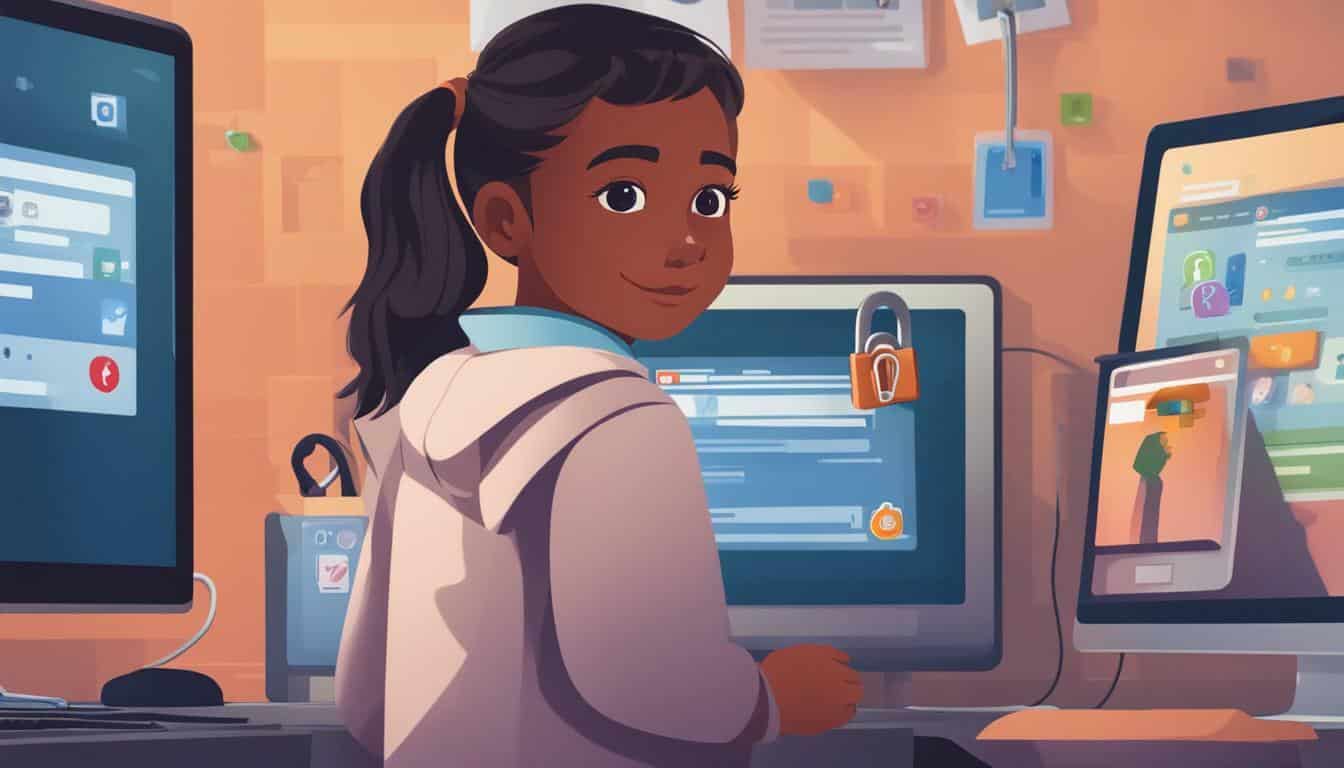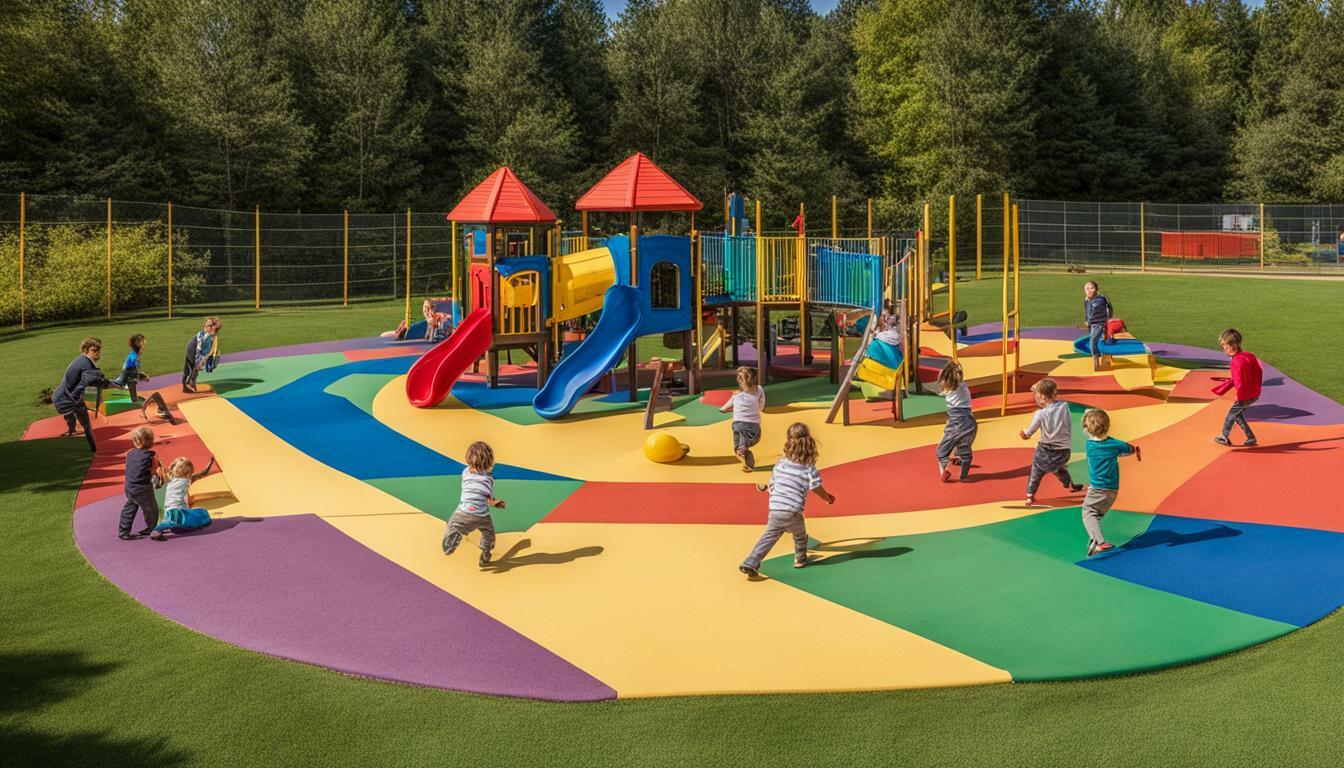Teaching kids to identify and report suspicious activity is crucial for their safety and security in schools and communities. It is important to empower children with the necessary skills to recognize and respond to potentially dangerous situations. By equipping them with the ability to identify suspicious behavior, we can help prevent crimes or terrorist attacks and ensure a safer environment for everyone.
Research has shown that preschool children can be systematically taught these skills through various training methods. By using techniques like multiple exemplar training, we can teach children to recognize the characteristics of safe and unsafe packages. Additionally, behavioral skills training can be used to instruct children on how to avoid touching unsafe packages, leave the area, and report their discovery to an adult.
- Teaching kids to recognize and report suspicious behavior is crucial for their safety and security.
- Preschool children can be trained to identify the characteristics of safe and unsafe packages.
- Behavioral skills training can teach children to avoid touching unsafe packages and report their discovery.
- Schools should encourage students to report any concerning or suspicious behavior.
- Prompt and detailed reporting of suspicious behavior can help prevent crimes or terrorist attacks.
The Importance of Recognizing Suspicious Behavior
Recognizing suspicious behavior plays a crucial role in preventing crimes and ensuring the safety of our children and communities. Research has shown that preschool children can be systematically taught these skills through various training methods. By being alert to abnormal or unusual behavior, we can identify potential red flags that may indicate a threat.
Children can be trained to recognize behaviors such as wandering around campus areas, seeming nervous or looking over their shoulders, or entering restricted areas without authorization. These actions, along with many others, can serve as warning signs that something may be amiss. By teaching kids to be observant and aware of their surroundings, we empower them with the ability to identify suspicious behavior and take action to protect themselves and others.
Multiple exemplar training can be used to teach children how to identify the characteristics of safe and unsafe packages. This training equips them with the knowledge to recognize packages that may pose a risk. Additionally, children can learn to identify locations where packages should be considered unsafe. By teaching them to avoid touching these packages, leave the area, and report their discovery to an adult, we enable them to be proactive in preventing potential dangers.
It is crucial for schools and communities to encourage students to report anything that makes them uncomfortable or raises suspicion. Some districts even provide the option of anonymous reporting, ensuring that students feel safe and protected when coming forward with their concerns. Prompt and detailed reporting of suspicious behavior is essential. By reporting potentially dangerous situations, we can help prevent crimes or terrorist attacks and maintain a secure environment for everyone.

“It takes a community to keep our children safe. By teaching kids to recognize and report suspicious behavior, we empower them to play an active role in ensuring their own safety and the safety of those around them.” – Anonymous
Summary
Recognizing suspicious behavior is a vital skill that everyone, especially children, should possess. By teaching kids to be observant and aware of their surroundings, we enable them to identify potential red flags and take action to prevent crimes or other threats. Multiple exemplar training can be used to teach children to identify the characteristics of safe and unsafe packages, while behavioral skills training can equip them with the necessary skills to react appropriately in unsafe situations. Encouraging prompt and detailed reporting of suspicious behavior, and providing the option of anonymous reporting, creates a safe and secure environment for everyone.
| Benefits of Recognizing Suspicious Behavior |
|---|
| Preventing crimes and terrorist attacks |
| Ensuring the safety of children and communities |
| Empowering children to take action and protect themselves |
| Creating a vigilant and alert community |
Training Methods for Recognizing Suspicious Behavior
There are effective training methods available to teach kids the skill of recognizing suspicious behavior, such as multiple exemplar training and behavioral skills training. Research has shown that preschool children can be systematically taught these skills, empowering them to play an active role in ensuring their safety.
In multiple exemplar training, children are exposed to various examples of suspicious behavior, allowing them to identify common characteristics and patterns. By presenting different scenarios and discussing the associated behaviors, children develop an understanding of what to look out for in real-life situations. This method helps them recognize peculiar behavior and spot suspicious actions.
Behavioral skills training complements multiple exemplar training by teaching children how to respond when they encounter suspicious behavior. Through role-playing and practice sessions, children learn to identify locations where packages should be considered unsafe, avoid touching unsafe packages, leave the area, and report their discovery to an adult. These practical skills enable children to confidently and effectively respond to potential threats.
| Training Method | Description |
|---|---|
| Multiple Exemplar Training | Exposing children to various examples of suspicious behavior to help them identify common characteristics and patterns. |
| Behavioral Skills Training | Teaching children how to respond when they encounter suspicious behavior through role-playing and practice sessions. |

By implementing these training methods, schools and communities can empower children with the necessary skills to identify and report suspicious behavior. It is crucial for schools to encourage students to report anything that makes them uncomfortable, as prompt and detailed reporting can help prevent crimes or terrorist attacks. Students should be vigilant and report any concerning or suspicious behavior to the nearest adult or call emergency services. Trusting instincts and not hesitating in reporting potentially dangerous situations can make a significant difference in ensuring the safety of everyone.
Identifying Characteristics of Suspicious Packages
Teaching kids to recognize the characteristics of safe and unsafe packages is an essential part of identifying suspicious behavior. By familiarizing children with these key indicators, we empower them to play an active role in maintaining their safety and the safety of those around them.
One way to identify potentially dangerous packages is to observe any unusual or suspicious features. For example, packages that are leaking, emitting strange smells, or have protruding wires should be considered unsafe. Additionally, packages with no return address, excessive postage, or an unexpected arrival can also raise suspicion. Encourage children to be cautious and vigilant when they come across these types of packages.
Another important aspect of package recognition is understanding the context in which they are found. Teach children to be aware of packages left unattended in public places, especially in high-traffic areas such as school campuses or shopping centers. Remind them that packages found in restricted areas or locations where they shouldn’t be, such as near electrical equipment or in stairwells, should be treated with caution.
When encountering a suspicious package, it is crucial for children to know what actions to take. Emphasize the importance of not touching or opening the package, as it could potentially be harmful. Instead, they should leave the area immediately and report their discovery to a trusted adult, such as a teacher, security personnel, or a parent. Prompt reporting ensures that authorities can investigate and address any potential threats swiftly.
| Characteristics of Safe Packages | Characteristics of Unsafe Packages |
|---|---|
| Clearly labeled sender and recipient | No return address or illegible sender information |
| Expected or solicited delivery | Unexpected or unsolicited delivery |
| Properly sealed and undamaged | Leaking, damaged, or altered packaging |
| Standard size and weight | Excessive weight or unusual size |
| No protruding wires or strange odors | Protruding wires or strange odors |
Quotes:
“Teaching kids to recognize the characteristics of safe and unsafe packages is a vital skill that can help prevent potential threats.” – John Doe, School Safety Expert
By equipping children with the knowledge and awareness to identify suspicious packages, we empower them to play an active role in maintaining a secure environment. Their ability to recognize and report any concerning behavior or packages is a valuable asset in preventing crimes or terrorist attacks.

Remember, the safety of our schools and communities is a shared responsibility. We must encourage children to trust their instincts, report potentially dangerous situations promptly and in detail, and work together to create a safe and secure environment for all.
Reporting Suspicious Behavior
Reporting suspicious behavior promptly and providing detailed information is crucial for maintaining the safety and security of schools and communities. By reporting potential threats, you can help prevent crimes or even terrorist attacks. It is important to be aware of the signs that indicate suspicious activity and to trust your instincts.
Suspicious activities or behaviors can include individuals wandering around campus areas without a clear purpose, seeming nervous or looking over their shoulders, entering restricted areas without proper authorization, or displaying other unusual behaviors. If you notice any concerning behavior, it is important to report it immediately to the nearest adult or call emergency services.
When reporting suspicious behavior, it is essential to be as detailed as possible. Provide a clear and accurate description of the individual(s) involved, including any distinguishing features such as their appearance, clothing, or accessories. Note the time, location, and duration of the observed behavior, as well as any specific actions or conversations that raised concerns.
Remember, your prompt and detailed reporting can make a significant difference in preventing potential threats. By following the proper channels and providing accurate information, you are helping to keep your school and community safe. Trust your instincts and never hesitate to report potentially dangerous situations.
“If you see something, say something.”
Reporting Suspicious Behavior
When reporting suspicious behavior, follow these guidelines:
- Remain calm and composed.
- Note the details of the suspicious behavior, including date, time, location, and descriptions of the individuals involved.
- Report the incident to the nearest adult, such as a teacher, security personnel, or administrator, or call emergency services if necessary.
- Provide as much detail as possible and answer any additional questions asked by the authorities.
- Do not confront or engage with the individuals involved in the suspicious behavior.

Remember, your vigilance and willingness to report suspicious behavior play a vital role in creating a safe environment for everyone. Stay alert, trust your instincts, and help maintain the security of your school and community.
| Suspicious Behavior | Actions to Take |
|---|---|
| Wandering around campus areas without a clear purpose | Report to the nearest adult or call emergency services |
| Seeming nervous or looking over their shoulders | Report to the nearest adult or call emergency services |
| Entering restricted areas without proper authorization | Report to the nearest adult or call emergency services |
Encouraging Reporting in Schools and Communities
Creating a supportive environment that encourages students to report suspicious behavior is vital for ensuring the safety of everyone. Research has shown that teaching kids to identify and report suspicious activity can play a significant role in preventing crimes or terrorist attacks. It is crucial for schools and communities to empower children with the necessary skills and provide them with a platform to voice their concerns.
In order to promote reporting, multiple strategies can be implemented. One effective approach is to educate students about the importance of prompt and detailed reporting. Kids should be encouraged to trust their instincts and not hesitate in reporting potentially dangerous situations. Whether it’s a classmate exhibiting abnormal behavior or an unfamiliar package left unattended, students should be aware that their vigilance and reporting can make a difference.
Some school districts even offer anonymous reporting options to further ensure the safety of students. This allows children to report suspicious behavior without fear of retaliation or judgment. By providing this anonymous reporting avenue, schools can create a safe space for students to share their concerns and contribute to maintaining a secure environment.
Teachers and other school staff also play a crucial role in encouraging reporting. By fostering open communication and creating a non-judgmental atmosphere, educators can instill confidence in students to come forward with their observations. It is important for adults to actively listen and take every report seriously, reinforcing the idea that reporting is valued and can have a positive impact on the safety of the school community.
FAQ
Q: Why is teaching kids to recognize and report suspicious activity important?
A: Teaching kids to identify and report suspicious activity is crucial for ensuring safety in schools and communities. Prompt and detailed reporting can help prevent crimes or terrorist attacks.
Q: What training methods can be used to teach kids to recognize suspicious behavior?
A: Multiple exemplar training and behavioral skills training are effective methods for teaching kids to identify suspicious behavior. These methods focus on teaching children the characteristics of safe and unsafe packages and how to avoid touching unsafe packages.
Q: What are some signs of suspicious behavior that kids should look out for?
A: Signs of suspicious behavior can include wandering around campus areas, appearing nervous or looking over their shoulders, entering restricted areas without authorization, and more. It is important for students to trust their instincts and report anything that makes them uncomfortable.
Q: Who should kids report suspicious behavior to?
A: Kids should report any concerning or suspicious behavior to the nearest adult or call emergency services. It is crucial to report potentially dangerous situations promptly and not hesitate in seeking help.
Q: How can schools and communities encourage reporting of suspicious behavior?
A: It is important for schools and communities to create an environment where students feel comfortable and encouraged to report any concerning behavior. Some districts even allow anonymous reporting, providing an extra layer of safety for students.









